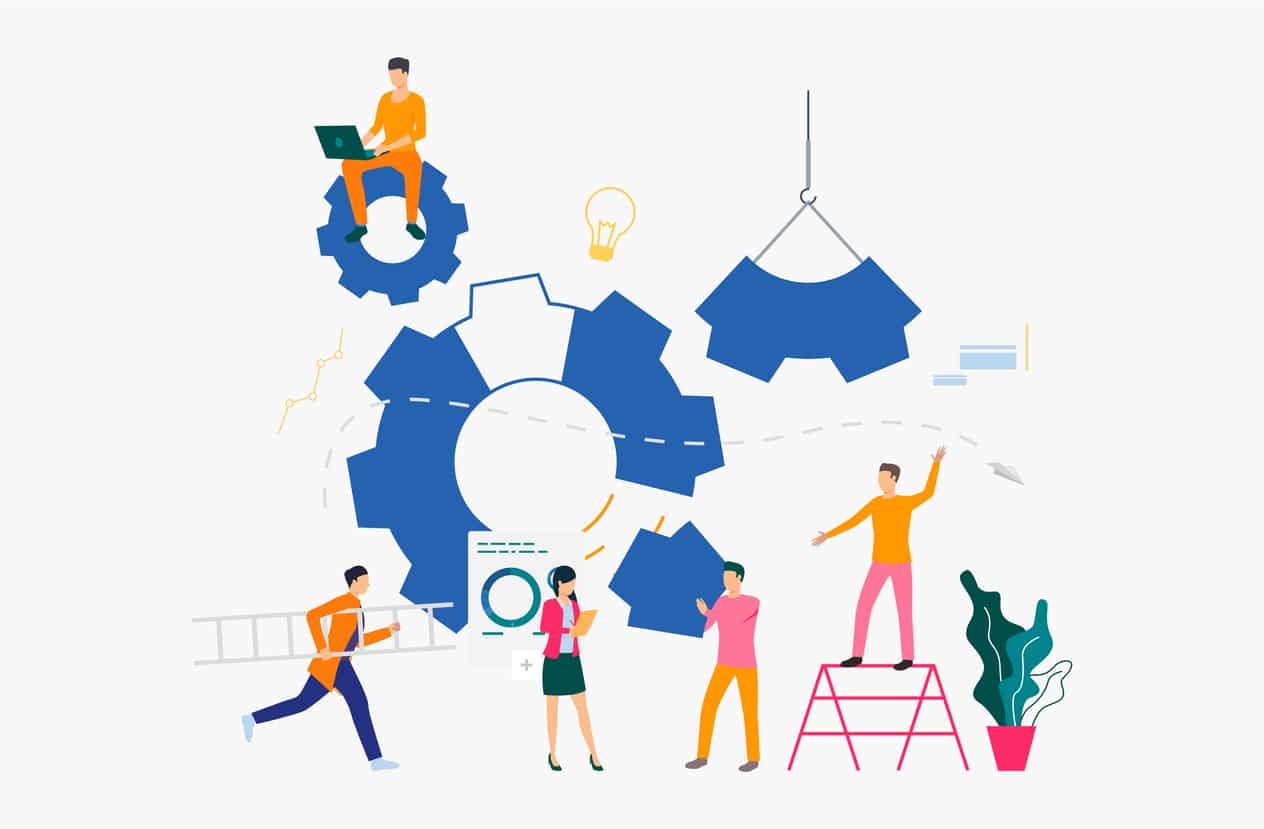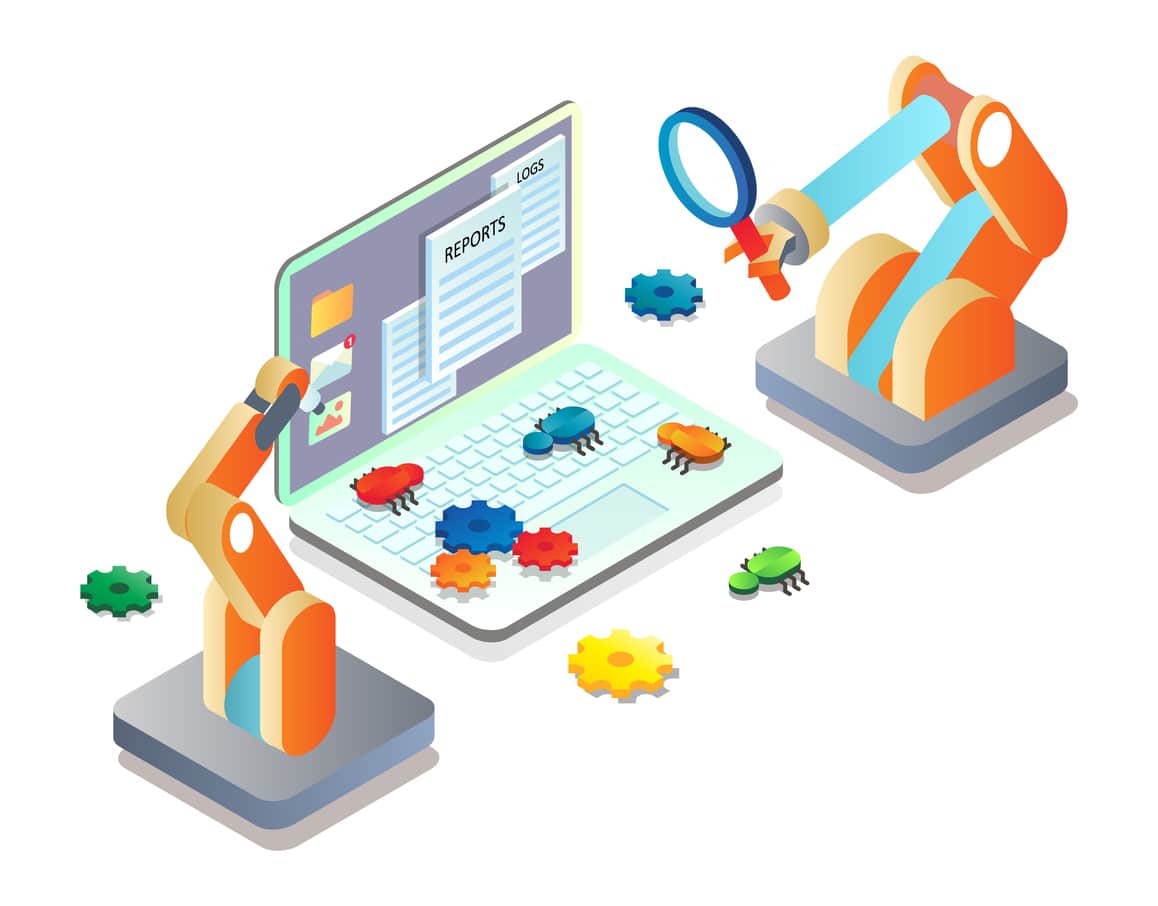A well-designed and highly performing website is crucial to the success of your business. Your website is the cornerstone of your marketing efforts and is often the first interaction people have with your company. Most people will form an impression of your website in roughly 0.05 seconds. In this fraction of a second, they decide whether they will stay on your website to conduct their research and learn about your company or move onto a different site to find what they are looking for. With such a small window to capture the attention of your audience, it’s critical that you nail the website development process.
Website development refers to all of the steps that go into the creation of a new website. This includes a wide range of actions, updates and operations that allow you to not only build the website, but effectively manage it once it goes live. This is a complicated process that typically involves a team of specialists to ensure every phase is performed correctly.
When all of the stages of the website development process are executed properly, you’ll experience a variety of benefits:
- Better search engine rankings
- Ability to convey your brand messaging more effectively
- Improved scalability
- Ability to implement advanced functionality that addresses the needs of your business
- Better overall user experience
- Increased website traffic
- Improved lead generation and conversions
To experience these benefits, you’ll need to devote a significant amount of time and resources to the website development process. The following stages are crucial to building an effective website that will help your business grow and thrive:
Information Gathering

The first part of the information gathering process should focus on identifying the purpose and goals for your new website. Some potential goals may include:
- Growing your brand
- Providing educational materials to your audience
- Improving search engine rankings
- Increasing lead generation and conversions
- Increasing online product sales
- Boosting customer loyalty and garnering repeat sales
- Establishing your business as an industry thought leader
While it’s good to establish a few goals, we recommend that you focus on the 3-4 items most critical to driving your business forward. If you have too many goals, it will be more challenging to create a cohesive plan that effectively addresses them all.
Once you’ve established your goals, you’ll need to compile information about your target audience. This should include:
- Demographic info (age, education level, income, etc.)
- Interests and habits
- Pain points, concerns and needs
- Types of messaging which may motivate them to take action
The best way to gather this information is to build detailed personas for each group in your target audience. These personas will ensure that the design elements, content and calls to action used on your website resonate with the specific needs of your audience.
Planning
The information gathered during the first phase of the process will be used to create a detailed plan for the website development project. The plan should include the following items:
- Sitemap – This will define your website navigation. It includes a list of all pages that will be included on the website and how they relate to one another. The sitemap will group pages into primary topics and related subtopics in a way that creates a user-friendly navigation structure.
- Wireframe – This is a visual blueprint of the website. It provides a description of the website’s layout and functionality before any design elements such as colors, logos fonts, branding elements, or other visual assets are added.
- Functionality requirements – What functional elements must be added to the website to achieve the goals established in the first phase of the process? Depending on your goals and the specific needs of your audience, this can involve eCommerce functionality, user logins, social media integrations, dealer handoffs, and many other items.
- CMS requirements – List out the features you’ll need from a content management system (CMS) to ensure your new website provides an intuitive and streamlined admin experience.
- SEO opportunities – Identify the keywords used by your target audience when they are researching the products, services and solutions you provide. These keywords will directly impact your choice of pages to include in your sitemap.
- KPIs – What are the metrics you’ll use to evaluate the success of your new website? These success metrics should relate to the goals established in phase one and provide you with the insights necessary to understand what adjustments must be made over time to improve your results.
Design

- Images
- Photos
- Videos
- Colors
- Typography
- Logos
- CTAs
Your design should be created with your target audience in mind and should help convey your brand messaging. The design phase is critical to your ability to achieve a unique website that helps your business stand out from your competitors.
At the end of the design process, you’ll be able to view a static mockup of your new website design. This will give your team a clear understanding of what the final website will look like and provide you with an opportunity to request any revisions necessary to convey your brand messaging more effectively.
Content Creation
During the next stage of the website development process, you’ll begin writing the content for every page on your site. Well written, informative and engaging content is critical to the success of your website. Your content is one of the primary ways to convey your brand messaging, establish your business as an industry thought leader and build trust with your audience. In addition, your content plays an integral role in your ability to rank well on the search engines.
Your website should contain a mix of the following types of content:
- SEO content – Pages and blogs written to address the keywords identified during the planning stage of the website development process. This content should be highly comprehensive to improve your ability to rank for these keywords. As with all content on your website, it should always remain on brand.
- Long form gated content – If you plan on running email marketing campaigns, you’ll need a mechanism to capture the email contacts for potential leads. One of the most effective ways to do this is to create long form, gated content pieces such as eBooks, white papers and guides. When you make this content gated, your audience will be required to provide their contact information in order to download the material. You can then add their email address to your list of contacts and include them in your email marketing efforts moving forward.
- Educational thought leadership content – Your website is one of the most important opportunities you have to establish your business as an industry thought leader. To accomplish this, you’ll need to write educational content that provides your audience with the important information they need when researching solutions associated with your specific industry.
- Branding content – While every page and blog on your website should convey your brand, there are certain pages on the website that will be specifically devoted to telling your brand story. These include your about us page and any pages devoted to USP (unique selling proposition) items you offer.
Development
The writing and development stages should actually be considered steps 4A and 4B since they are typically completed at the same time. During the development stage, your website is actually built.
There are two components to the website development phase:
- Front-end development – The designs created earlier in the process are turned into a live, interactive experience that will be seen when individuals visit your website. Tools such as JavaScript, CSS and HTML are used to create the front-end experience seen by your website visitors.
- Back-end development – Back-end programming is responsible for managing the data and functionality that enables the front-end experience seen by your website visitors. Back-end development isn’t seen by the end user, but it is critical for your website to function properly.
Testing

The testing process will include:
- Checking every link to make sure none are broken
- Checking every form and script to ensure they are working properly
- Using code validators to ensure all code adheres to industry standards
- Evaluating website speed and page load times
- Making sure the website works properly on all browsers and with all devices (desktop, mobile and tablet)
Launch
After all testing is complete and you have confirmed everything is working properly, it’s time to launch the website. This process involves uploading the website to a server using FTP (File Transfer Protocol) software. After all files have been added to the server, you should run one final test to ensure everything has been uploaded properly.
During the launch process, your web design and development company should provide you with CMS training. This is a basic walkthrough of your website’s admin dashboard so that your team understands how to make edits and updates once the site goes live. While your website design and development agency can make these updates for you, it’s beneficial for your team to understand how to make small updates which don’t require the assistance of a dedicated specialist.
Maintenance
Your website isn’t a static entity. It must be updated and maintained periodically to ensure it continues to meet the needs of your business as it evolves. These maintenance and update tasks can be as simple as adding new content and visual assets to the website. However, it can also include more complex tasks such as:
- Adding new features that provide a better user experience
- Updating website security
- Improving site speed
- Adding integrations with other software
- Fixing bugs
- Updating your CMS as new versions are released
Webolutions Can Help with Your Next Website Development Project
The website development process is highly complex. To ensure every stage is performed correctly, it’s important to work with an experienced web design agency who has in-house specialists responsible for each of the tasks discussed above. Webolutions can deliver a high quality website that will set your business up for success.
Since its inception in 1994, Webolutions has been regarded as one of the nation’s leading website design and development agencies. Our exclusive Websites Right Methodology™ has been developed from the knowledge and lessons learned from building thousands of websites over the past 27 years. This unique, fully integrated, strategic approach to website development creates a superior client experience and increased website marketing performance that will elevate the success of your business.
All of the stages of the development process discussed above are performed with meticulous detail, keeping the needs of your business and your target audience front and center at all times. Our team will collaborate with you every step of the way to ensure we are all aligned and all of your needs are being addressed. Our team of experienced developers can implement any advanced website functionality you may need, and our designers will create a custom web design that brings your brand story to life.
You’ll also benefit from:
- Tactical content leadership that creates an ongoing plan for the content you need to achieve your goals over time
- SEO best practices that will achieve better search engine rankings
- Ongoing analysis to ensure you’re achieving the KPIs established during the planning phase of the website development project
- Strategic recommendations from our marketing experts to improve your website’s performance over time
Contact us today to schedule a free website development consultation. Webolutions serves clients nationwide from our offices in Denver, Colorado.
